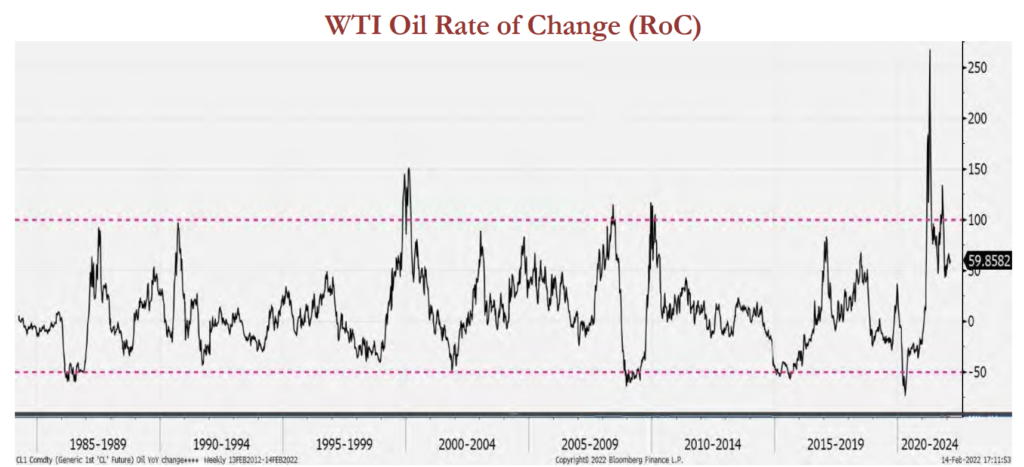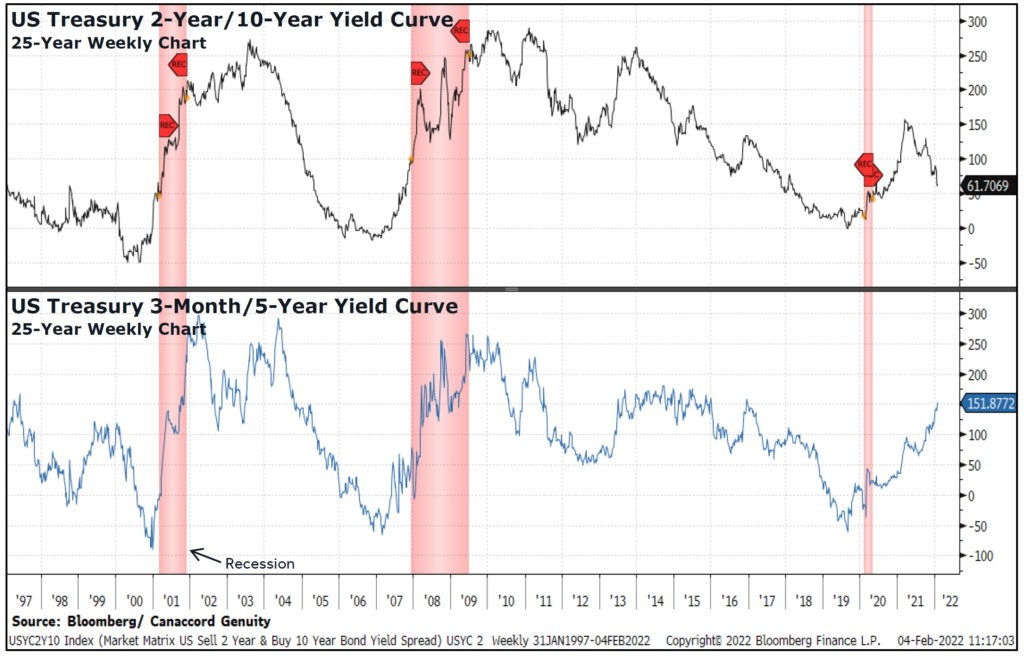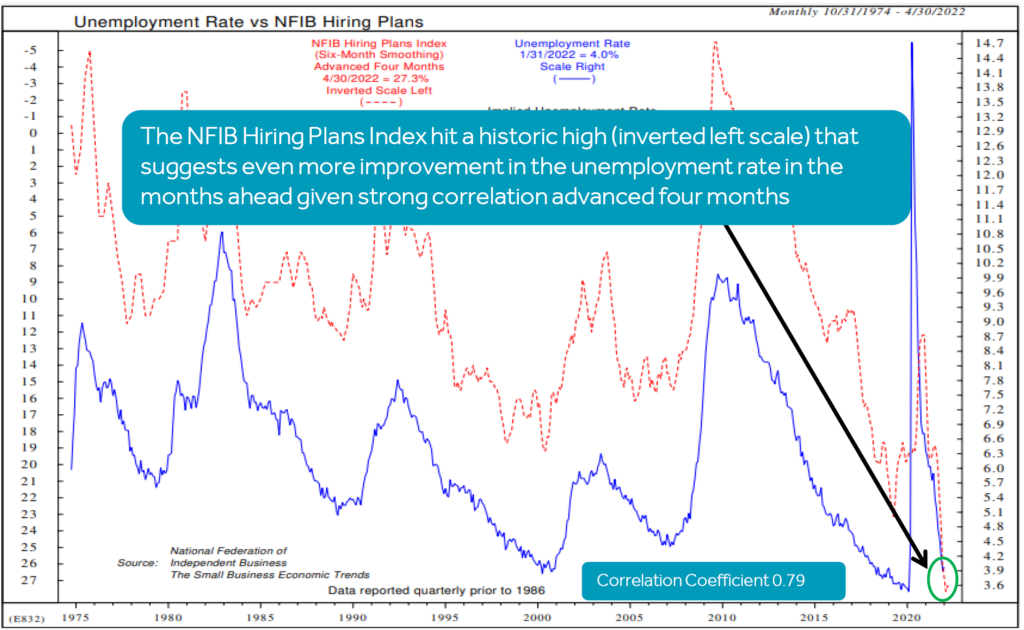Positive and Negative Psychology In the Markets
While most economists don’t believe a recession is in the cards, on average, until 2025, many market participants are beginning to fear otherwise. Their fears focus on the Fed, which is increasingly seen to be so far behind the curve in addressing inflation that it will need to take drastic, and ultimately recession-inducing, action to try to stem the tide. If the bond market were allowed to take interest rates to where buyers driven solely by economic considerations existed, interest rates would reach alarming levels… but that’s a fantasy in the context of current policy.
Some seem to think that the Fed’s policy actions are like precision munitions which destroy only their intended target and leave the surrounding innocent bystanders unharmed. Such things actually don’t exist in any real-world aresenal, only in propaganda — and the truth is that the Fed’s policies are not “surgical strikes.” They can affect credit conditions quickly, but those effects only trickle through to prices and wages indirectly and gradually. However, credit conditions affect other things more rapidly — things like housing prices, stock prices, and bond prices. In short, the market rationally worries that Fed action may ultimately address the problems, but at the cost of a near-term crunch — probably a recession.
The recent crisis on the border of Russia and Ukraine is interesting in this regard. The prospect of hostilities has already caused the price of oil to spike, and the actual outbreak of hostilities would naturally cause it to spike still more. (We believe the market has already acquiesced to de facto Russian control of Ukraine. However, it has not priced in prolonged violence.)
Without implying any conspiratorial intent, such turmoil can be useful to mask and distract from underlying economic problems — such as stagflation. So geopolitical events are further significant fuel to observers’ fears of inflation and a damaging Fed response. Whatever the causality, spikes in the rapidity with which oil prices rise have correlated to difficult economic conditions on many occasions in the past.

Source: The Institutional Strategist
With oil prices a potential source of more persistent inflation, we noted comments recently from a major Asian container shipper to the effect that freight rates are not anticipated to fall back to pre-covid levels. Ports, especially in China, are seeking tariff increases, and decarbonization efforts are about to sideline quite a bit of container capacity, as stricter emissions are imminent in 2023. On balance, elevated shipping costs will likely persist through the rest of this year and next.
This is the background of some of the market’s current negative psychology. But there are also positive data backing up a more bullish view on markets.
For example, we note that while the yield curve that tracks the difference between the two-year and ten-year Treasuries is flattening towards an inversion — which is a classic augur of recession — the yield curve tracking five-month versus five-year Treasuries is sharply steepening. This is typically a curve that is more relevant in the early innings of an expansion.

Source: Canaccord Genuity
And National Federation of Independent Business [NFIB] hiring plans do not suggest that a recession is imminent:

Source: Canaccord Genuity
And most significantly, the trend of earnings remains positive, even as it comes off the disruptive pandemic sugar high. This was well-expected and understood. Earnings is the mother’s milk of stock prices… and it remains positive.
What We Like
A significant amount of froth has already been taken out of the stock markets, with many insanely valued companies and industries falling dramatically in price since November. Some of these are, in our view, approaching interesting price levels, although many are still elevated and will likely decline further during any volatile periods in 2022. We have noted some fintechs, for example, that have declined so sharply from their euphoria and liquidity-driven pandemic peaks that they have actually returned to near-market multiples. Be on the lookout for growth stories that have been repriced in this way.
While there may be valuation issues, for example, with some beneficiaries of the Fourth Industrial Revolution — such as some chip manufacturers, for example, who have been bid up during the ongoing shortage — these companies do not have any issues with demand.
We recently heard Microstrategy [MSTR] CEO Michael Saylor speaking at a conference and echoing the truism that digitization software and hardware enablers are the oil companies and the steel companies of the present era. Just as the dominance of the United States and its allies in steel and energy allowed us to prevail in two global wars in the last century, digital dominance in every sphere is a matter of existential importance to nation states seeking hegemony or even simply survival. Nations managed by intelligent leaders will seek to preserve dominance in these critical technologies, which is why we are also happy to see a reshoring of chip capacity to the U.S. — including major new manufacturing plants being built by Intel [INTC] and Taiwan Semiconductor [TSM] in Ohio, Arizona, and other domestic locations.
If we were to summarize what we like most and are looking for in stocks at this juncture, it would be innovation, visible growth, and strong balance sheets. To that we would add inflation-defense assets, particularly some precious metals and miners; tech-adjacent commodities and commodity producers; and brands and companies with pricing power who can turn inflation into accelerating earnings. In an inflationary environment, capable managements stand out.
Thanks for listening; we welcome your calls and questions.

